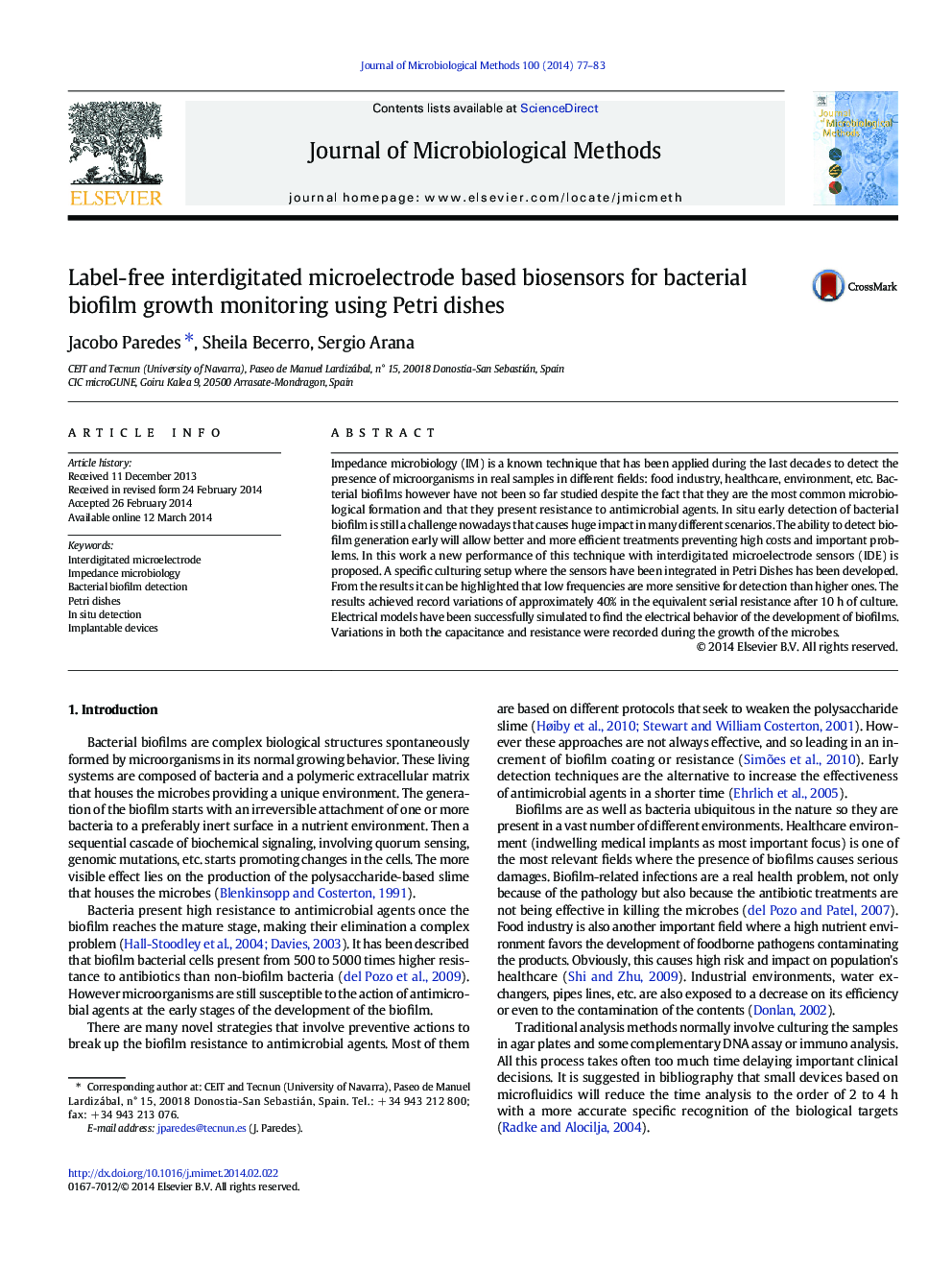| Article ID | Journal | Published Year | Pages | File Type |
|---|---|---|---|---|
| 8422306 | Journal of Microbiological Methods | 2014 | 7 Pages |
Abstract
Impedance microbiology (IM) is a known technique that has been applied during the last decades to detect the presence of microorganisms in real samples in different fields: food industry, healthcare, environment, etc. Bacterial biofilms however have not been so far studied despite the fact that they are the most common microbiological formation and that they present resistance to antimicrobial agents. In situ early detection of bacterial biofilm is still a challenge nowadays that causes huge impact in many different scenarios. The ability to detect biofilm generation early will allow better and more efficient treatments preventing high costs and important problems. In this work a new performance of this technique with interdigitated microelectrode sensors (IDE) is proposed. A specific culturing setup where the sensors have been integrated in Petri Dishes has been developed. From the results it can be highlighted that low frequencies are more sensitive for detection than higher ones. The results achieved record variations of approximately 40% in the equivalent serial resistance after 10Â h of culture. Electrical models have been successfully simulated to find the electrical behavior of the development of biofilms. Variations in both the capacitance and resistance were recorded during the growth of the microbes.
Related Topics
Life Sciences
Biochemistry, Genetics and Molecular Biology
Biotechnology
Authors
Jacobo Paredes, Sheila Becerro, Sergio Arana,
